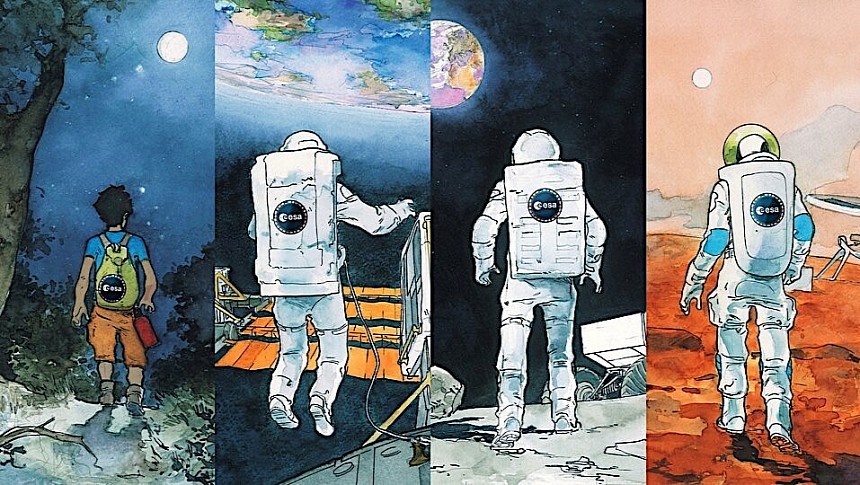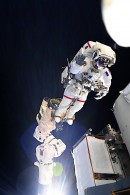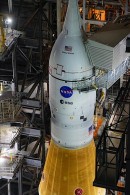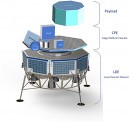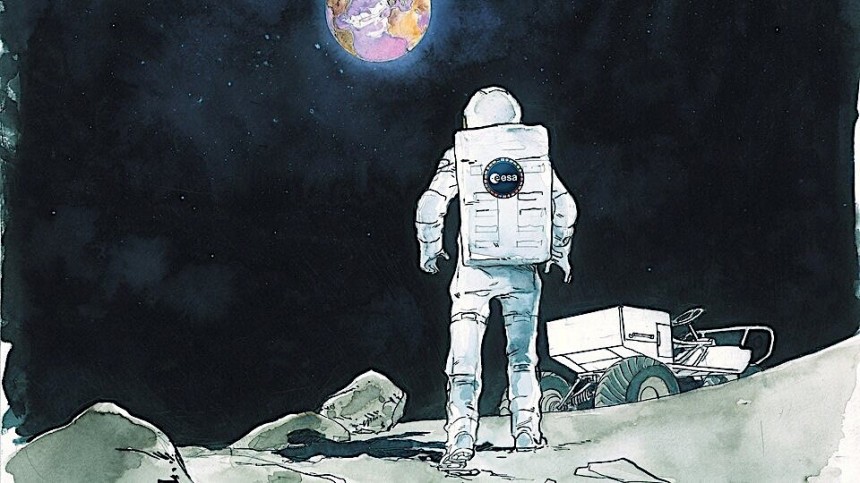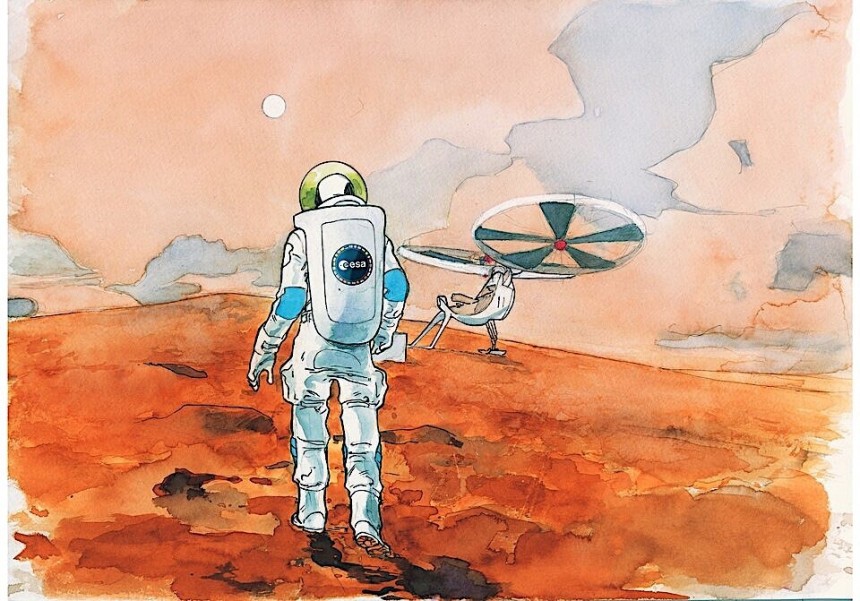Over the last weekend we had a look at something called the Argonaut. Taking its name after the sailors from Greek mythology, Argonaut is a lunar lander meant to be used as a supply truck for future missions to the Moon. It's also part of a larger space exploration strategy the Europeans have in place as a means for them to become more relevant in the glorious decades ahead. And the strategy in question is called Terrae Novae.
That's a term that translates into New Worlds, and a very fitting choice for a plan for space exploration unprecedented in scale for Europe. It's also a very high-intensity strategy, as it has been devised as a medium-term plan, extending solely into the 2030s.
Despite being quite comprehensive, the strategy is centered around three main goals. These are, ESA says, the three New Worlds targeted by the Terrae Novae strategy. The first has to do with ensuring there is still a European astronaut presence in Earth orbit after the International Space Station (ISS) is decommissioned (the station is expected to enter and burn in the Earth's atmosphere in 2031).
Second on the list is the presence of European nations on the Moon, most likely as part of the Artemis program. The last goal on the list, but perhaps more important than anything, is to ensure ESA has a say and presence in the first crewed mission to Mars.
As far as the first New World is concerned, ESA is planning several major milestones this decade. The first and most within reach is sending an increased number of astronauts to the ISS on long-duration missions. Then, training for the future generation of astronauts should begin – a huge recruitment effort for this was completed recently by ESA.
Most importantly, the 2020s will bring to the ISS, for the first time, an astronaut with a physical disability. Details on this mission are not yet known, but its success will open up new opportunities for people who up until now believed they would never have a shot at going to space.
The second world of the Terrae Novae plan is the Moon. ESA is already involved in the Artemis program through a number of pieces of hardware it develops for the Orion spacecraft – the so-called European Service Modules. The agency will however play a huge role in the development of the lunar space station that is presently known as the Gateway, and which should have its first modules up and running by the end of the decade.
No less than two of the three Gateway habitation modules will be built by ESA and its partners and, on top of that, the organization has also been tasked with providing refueling and communications functions between the station and the outposts on the lunar surface.
Europe plans to send three of its astronauts out there to help with the assembly of the Gateway, but also with its operation. For the Old Continent, this assignment will mark the moment when some of its citizens reach the farthest point from Earth in their history.
Once a presence is established around the Moon, a series of missions to the surface are planned, including independent ones. They target anything from prospecting for water and other resources, to developing ways to harness and use said resources. The first European is scheduled to set foot on the Moon before 2030.
The Argonaut lander we mentioned earlier will play a very big role in keeping whatever lunar presence humanity will have supplied, up, and running. It will not be alone in this, as a series of rovers and infrastructure are also being planned across the pond. Naturally, all these assets will be shared with the Americans and Canadians.
The third and last New World ESA targets with this plan is Mars. The continent already has a Martian rover primed and ready to go, the Rosalind Franklin. The hardware was scheduled to launch from French Guiana long ago, but the fallout of Russia's invasion of Ukraine put an indefinite stop to that.
ESA is also involved in perhaps the most important alien world exploration effort ever devised, the Mars Sample Return mission. Using the Perseverance rover currently on Mars, but also a series of other pieces of hardware that are yet to be developed, the effort will bring back, for the first time, samples of the Martian surface for proper study here on Earth.
All of the above is expected to unfold by the end of the current decade. In the 2030s, plans will probably be even grander, and all of them will culminate with the first crewed mission to Mars, of which ESA clearly plans to be a part. Just so you know, official guidelines are for that to happen before 2040.
Aside from these cooperative efforts with other international partners, without which NASA's Artemis program, for instance, wouldn't have been possible, ESA does plan to go down its own path in space exploration, with its own science and technology projects, and development plans.
And given how competition is the engine of development, such bold plans will ultimately benefit us all.
Despite being quite comprehensive, the strategy is centered around three main goals. These are, ESA says, the three New Worlds targeted by the Terrae Novae strategy. The first has to do with ensuring there is still a European astronaut presence in Earth orbit after the International Space Station (ISS) is decommissioned (the station is expected to enter and burn in the Earth's atmosphere in 2031).
Second on the list is the presence of European nations on the Moon, most likely as part of the Artemis program. The last goal on the list, but perhaps more important than anything, is to ensure ESA has a say and presence in the first crewed mission to Mars.
As far as the first New World is concerned, ESA is planning several major milestones this decade. The first and most within reach is sending an increased number of astronauts to the ISS on long-duration missions. Then, training for the future generation of astronauts should begin – a huge recruitment effort for this was completed recently by ESA.
Most importantly, the 2020s will bring to the ISS, for the first time, an astronaut with a physical disability. Details on this mission are not yet known, but its success will open up new opportunities for people who up until now believed they would never have a shot at going to space.
No less than two of the three Gateway habitation modules will be built by ESA and its partners and, on top of that, the organization has also been tasked with providing refueling and communications functions between the station and the outposts on the lunar surface.
Europe plans to send three of its astronauts out there to help with the assembly of the Gateway, but also with its operation. For the Old Continent, this assignment will mark the moment when some of its citizens reach the farthest point from Earth in their history.
Once a presence is established around the Moon, a series of missions to the surface are planned, including independent ones. They target anything from prospecting for water and other resources, to developing ways to harness and use said resources. The first European is scheduled to set foot on the Moon before 2030.
The Argonaut lander we mentioned earlier will play a very big role in keeping whatever lunar presence humanity will have supplied, up, and running. It will not be alone in this, as a series of rovers and infrastructure are also being planned across the pond. Naturally, all these assets will be shared with the Americans and Canadians.
ESA is also involved in perhaps the most important alien world exploration effort ever devised, the Mars Sample Return mission. Using the Perseverance rover currently on Mars, but also a series of other pieces of hardware that are yet to be developed, the effort will bring back, for the first time, samples of the Martian surface for proper study here on Earth.
All of the above is expected to unfold by the end of the current decade. In the 2030s, plans will probably be even grander, and all of them will culminate with the first crewed mission to Mars, of which ESA clearly plans to be a part. Just so you know, official guidelines are for that to happen before 2040.
Aside from these cooperative efforts with other international partners, without which NASA's Artemis program, for instance, wouldn't have been possible, ESA does plan to go down its own path in space exploration, with its own science and technology projects, and development plans.
And given how competition is the engine of development, such bold plans will ultimately benefit us all.
